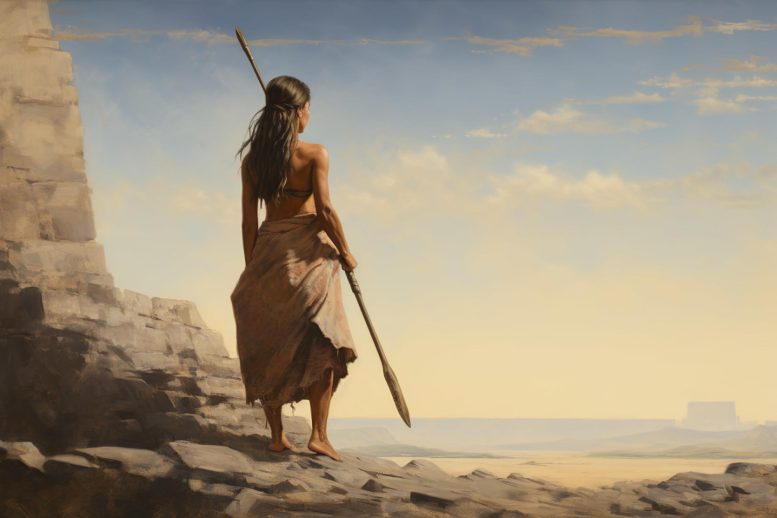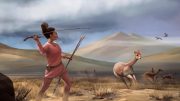
New research contradicts the common belief that in foraging societies, only men hunt and women gather, revealing that women actively hunt in 79% of these societies, utilizing diverse strategies and even teaching hunting practices. The study analyzed data from 63 global foraging societies and urges a reassessment of gender roles in historical and present-day foraging cultures, highlighting the need to avoid bias in archaeological interpretations.
Data from foraging societies around the world indicates that women often hunt large game skillfully.
Analysis of data from dozens of foraging societies around the world demonstrates that in at least 79 percent of these groups, women partake in hunting. This challenges the prevailing notion that hunting is solely a male activity while gathering is restricted to women. The research, led by Abigail Anderson from Seattle Pacific University, US, was recently published in the journal PLOS ONE.
A common belief holds that, among foraging populations, men have typically hunted animals while women gathered plant products for food. However, mounting archaeological evidence from across human history and prehistory is challenging this paradigm; for instance, women in many societies have been found buried alongside big-game hunting tools.
Some researchers have suggested that women’s role as hunters was confined to the past, with more recent foraging societies following the paradigm of men as hunters and women as gatherers. To investigate that possibility, Anderson and colleagues analyzed data from the past 100 years on 63 foraging societies around the world, including societies in North and South America, Africa, Australia, Asia, and the Oceanic region.
They found that women hunt in 79 percent of the analyzed societies, regardless of their status as mothers. More than 70 percent of female hunting appears to be intentional—as opposed to opportunistic killing of animals encountered while performing other activities, and intentional hunting by women appears to target game of all sizes, most often large game.
The analysis also revealed that women are actively involved in teaching hunting practices and that they often employ a greater variety of weapon choices and hunting strategies than men.
These findings suggest that, in many foraging societies, women are skilled hunters and play an instrumental role in the practice, adding to the evidence opposing long-held perceptions about gender roles in foraging societies. The authors note that these stereotypes have influenced previous archaeological studies, with, for instance, some researchers reluctant to interpret objects buried with women as hunting tools. They call for reevaluation of such evidence and caution against misapplying the idea of men as hunters and women as gatherers in future research.
The authors add: “Evidence from around the world shows that women participate in subsistence hunting in the majority of cultures.”
Reference: “The Myth of Man the Hunter: Women’s contribution to the hunt across ethnographic contexts” by Abigail Anderson, Sophia Chilczuk, Kaylie Nelson, Roxanne Ruther and Cara Wall-Scheffler, 28 June 2023, PLOS ONE.
DOI: 10.1371/journal.pone.0287101








This research is widely misrepresented by the press, and, to a lesser extent, by its authors. The paper clearly establishes that women in modern foraging societies participate in hunting. It also establishes that women in historically recent foraging societies participated in hunting activities.
However, the gender specialization of hominems during the course of human evolution is supported by a mass of evidence. For at least the last million years, men hunted and women gathered. This fact is of great significance to understanding modern human behavior.
‘Shatters the myth” is a very telling word choice. Makes one wonder how much bias is involved in the reporting, and potentially in the research.
Obviously males and females both hunted and gathered, the only difference was the size of prey pursued. Note the ‘shattering’ of the myth title only exposes the female authors as they try to distort science and make a feminist statement.
“… for instance, women in many societies have been found buried alongside big-game hunting tools.”
Rarely! In the style of hunting often encountered in the birthplace of hominids, a wounded animal might have to be tracked for hours or days, and then carried back to where the tribe was camping. Women, with their generally smaller stature, and frequent handicap of being pregnant or with a nursing child (which might be up to 5 years), would be at a severe disadvantage in bringing a carcass back to the tribe. It isn’t that they couldn’t do it, but that the challenges for a woman would be greater than for a man.
How about we take a systematic analysis of the evidence from hunter-gatherer populations over the last 15,000 years, instead of claiming that humans in the last 1 million years had this division of labor. There were no homo sapiens a million years ago or for hundreds of thousands of years. Further, gender size does not automatically mean that the larger gender did the hunting. We know that female lions do most of the hunting in their prides. Concrete evidence before speculation always.
“Concrete evidence before speculation always.”
Certainly. The concrete evidence is that lions eat their prey at the site of the kill. The larger males, traveling with the pride, will move in and eat first after the kill. It is their job to keep scavengers like hyenas and wild dogs from stealing the remains while the females eat.
Lions don’t need shelter or protection from top predators, and a single pride typically has far more females than males, being more like members of a harem than typical human societies with a more balanced mix of sexes.
Because humans often made camps with shelter from the sun and rain, and put up thorn-bush barriers to discourage the top predators from raiding at night, and needed raw materials and fire for their tool making and cooking, the babies, children, nursing women, and elderly occupied what were at least semi-permanent camps or villages, requiring food to be brought to them. That was true even in relatively recent times.
Yeah male lions pimp female lions just like human men pimp women. You’re right, the phenomenon is isomorphic.
Male lions pay a high price for exclusive sexual access to the females in the pride. Besides having the primary responsibility for driving off food competitors, they have to defend their position in the pride, as the genetic source, against younger male challengers. Once past their prime, they are easily ‘dethroned’ by younger males who either kill them outright or wound them so severely that they die soon afterward. A lion in the wild only lives about 1/3 as long as in captivity. Death is the engine of evolution. It keeps the genetic line strong and healthy. If that is your definition of “pimping,” I think it is a strange definition.
What a load of garbage. Never been a myth, females have always hunted. It’s common in nature like with the Lionesses. These authors just tried to use sensational wording.
Nice. So men have been pimping women for since day one.
Anyone else find it odd that “scientific” observations change over time often at a similar pace to change in culture?
Does not seem very “scientific” to me, LOL.
Wow. This article really upset the insecures.
I provided facts and reasons to question the conclusions of the authors. All you have provided is an insult.
There is an old saying that when you point a finger at someone, there are three fingers pointing back at yourself. You just might want to do some deep reflections on your own security.